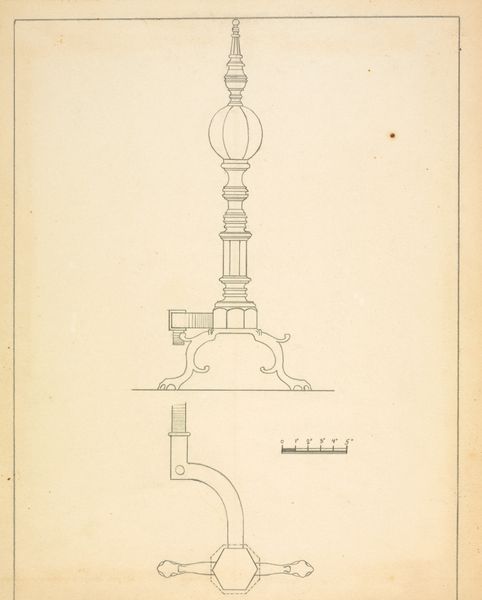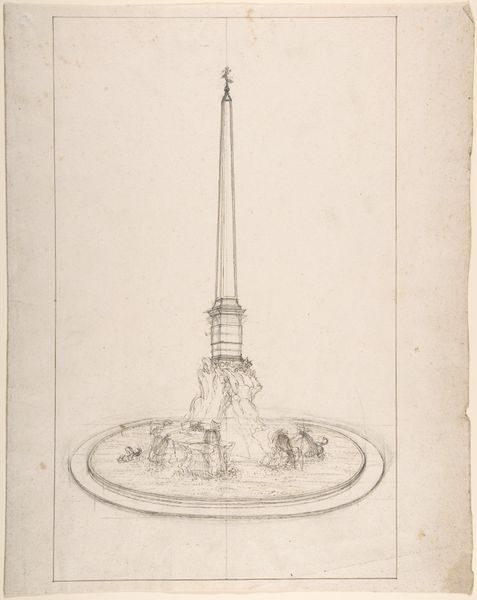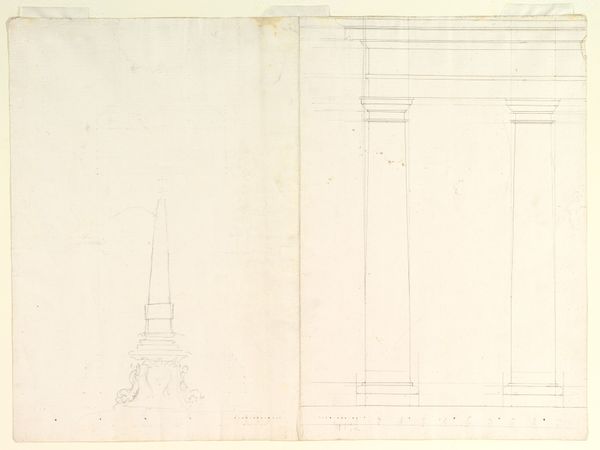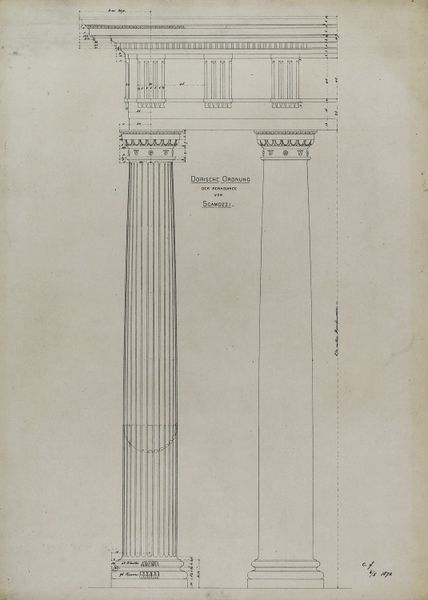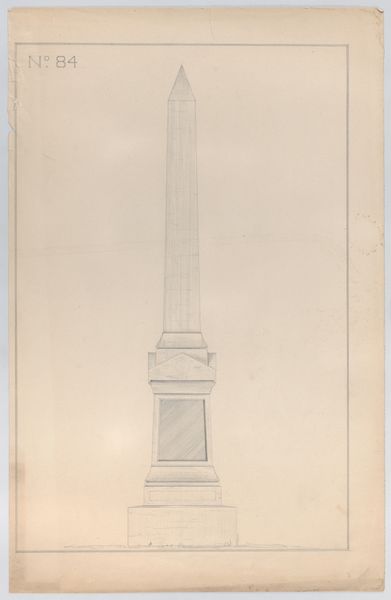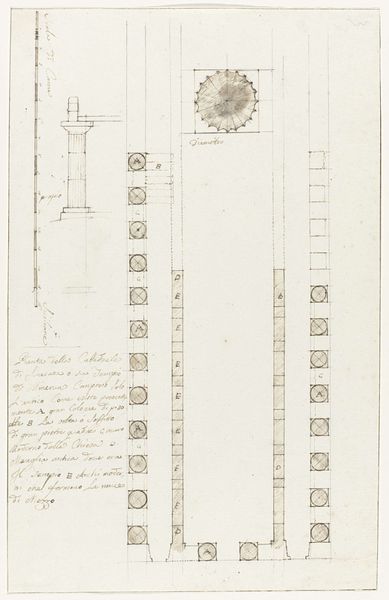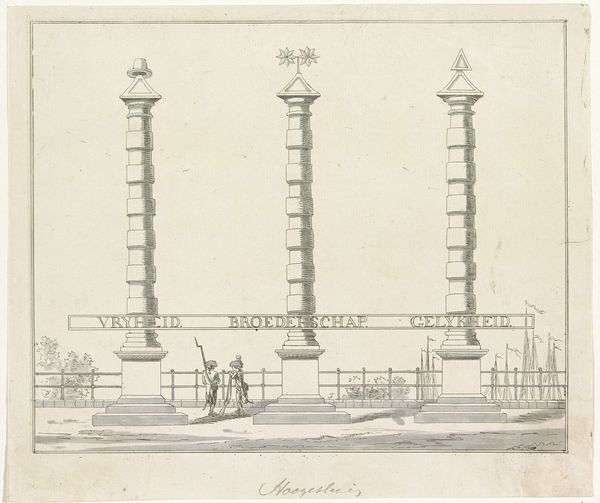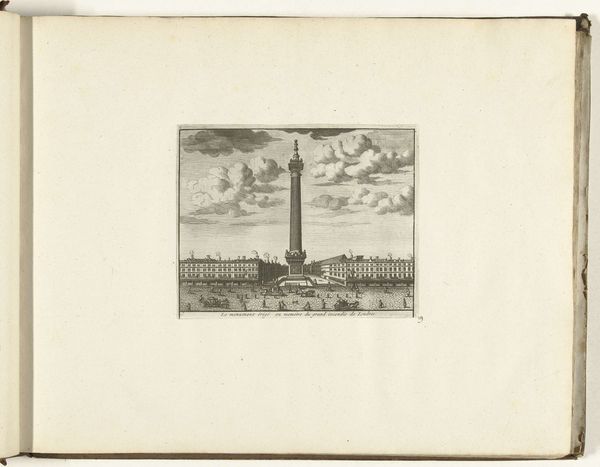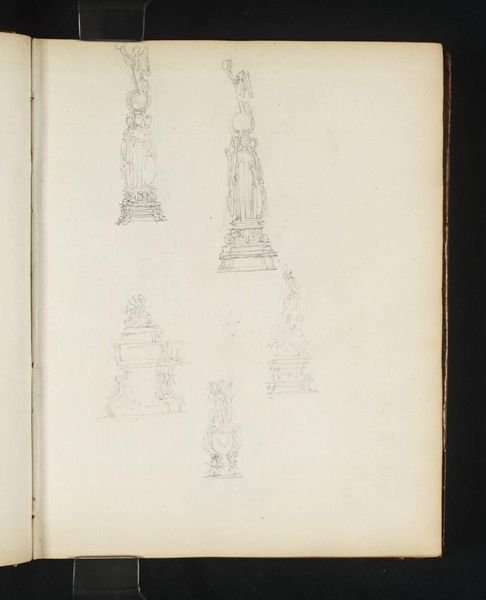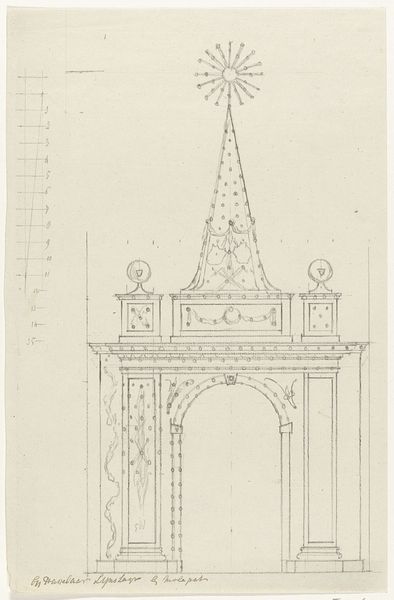
Ontwerp voor een obelisk voor het monument voor het Nationale feest ter viering van de vrede van 17 december 1799 1799
0:00
0:00
drawing, pencil, architecture
#
drawing
#
aged paper
#
toned paper
#
old engraving style
#
hand drawn type
#
landscape
#
classical-realism
#
form
#
personal sketchbook
#
fading type
#
geometric
#
pencil
#
stylized text
#
line
#
golden font
#
architecture
#
historical font
#
columned text
Dimensions: height 645 mm, width 438 mm
Copyright: Rijks Museum: Open Domain
Bartholomeus Ziesenis conceived this obelisk design around 1799, likely on paper with graphite. While the materials are simple, the design speaks volumes about the social context in which it was created. Obelisks, traditionally made of carved stone, were ancient symbols of power and commemoration. Here, the design is for a monument celebrating peace, aligning it with ideals of the French Revolution. However, consider the labor involved in constructing such a large-scale monument. Even in design form, the envisioned carving, transportation, and assembly evoke a sense of immense human effort. The drawing itself, with its precise lines and notations, represents a different kind of labor – the intellectual work of planning and design. Ziesenis's design bridges the gap between concept and physical reality, raising questions about the relationship between artistic vision and the labor required to realize it. This intersection challenges distinctions between design, craft, and fine art, reminding us that even seemingly simple materials can carry complex social and political meanings.
Comments
No comments
Be the first to comment and join the conversation on the ultimate creative platform.
